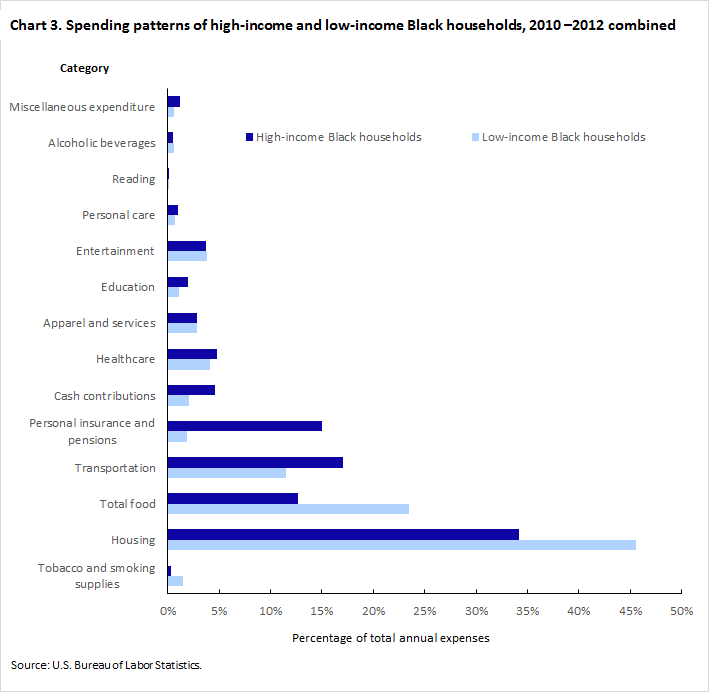2 the ongoing population growth and increases in educational attainment are key factors in the increase of african-americans consumer power. In 2017 Black consumers in the US.
 Black Impact Consumer Categories Where African Americans Move Markets Nielsen
Black Impact Consumer Categories Where African Americans Move Markets Nielsen
There is power in the Black dollar.

Black consumer spending statistics. Black consumers account for a disproportionate amount of product sales in a number of fast-moving consumer goods categories. Black shoppers spent 473 million in total hair care a 42 billion industry and made other significant investments in personal appearance products such as grooming aids 127 million out of 889 million and skin care preparations 465 million out of 3 billion according to Black Impact. The Sales Impact Of Black Consumers report is the companys eighth report on Black spending.
Tobacco 33 billion whiskey wine and beer 3 billion. Retail management platform Vend reported that in-store retail spending in South Africa over the 2018 Black Friday shopping period decreased by 10 compared to last year while volumes also saw a decrease of 24 Nonetheless spending results were encouraging in certain product segments. Black buying power currently stands at over 11 trillion and is on the road to hit about 15 trillion by 2021.
But other categories are stand-outs as well like baby food 4276 personal. Physical appearance reflects a sense of cultural pride and self-expression in the Black community. And with nearly 50 million Black people in the United States Black consumers spend more than 1 trillion a year.
Consumer Categories Where African Americans Move Markets a study by Nielsen. This report focuses on Black spending as a whole our mainstream influence and the impact of Black. According to the research 42 million Blacks have a spending power amounting to 11 trillion which gives each man woman and child an annual spending power of 26200 dollars.
They also are far more likely to read the financial pages of their newspaper 34 vs. Black buying power continues to increase rising from its current 1 trillion level to a forecasted 13 trillion by 2017. Again with 12 trillion in spending power African-American consumers are an important population for smart brands that want to grow market share and brand preference.
In some cases black consumers make up over 50 of overall spending such as the category of dry grains and vegetables. Dollars on hair care products. Black buying power African-American buying power has seen impressive gains since the end of the last economic downturn jumping from 961 billion in 2010 to an estimated 13 trillion in 2018.
Spent about 473 million US. Clothes electronics and shoes were the most bought items5. Average expenditure on beauty products among Black consumers in.
Nielsen which provides analytical insights about. Thats higher than the gross domestic product of. Advertising spend designed to reach Black consumers declined 5 between 2017 and 2018.
Consumer spending or personal consumption expenditures PCE is the value of the goods and services purchased by or on the behalf of US. Black spend their money overwhelmingly with white businesses on the following products and services. At the national level BEA publishes annual quarterly and monthly estimates of consumer spending.
Black buying power is projected to reach 12 trillion this year and 14 trillion by 2020 according to a report from the University of Georgias Selig Center for Economic Growth. Black Friday Consumer Spending Statistics Data Annual number of consumers that shop in stores or online on Black Friday 133700000 Average consumer internet spending on Black Friday 15955 Percent of. Black buying power was 14 trillion in 2019 according to the Selig Center for Economic Growth.
African-Americans with a household income of 75000 or more are far more likely than their counterparts in other consumer segments to find advertising for financial services to be interesting 38 vs. A new Nielsen report has confirmed what weve already known as Black consumers. And it is making more and more headlines.
Published earlier this month the Black Dollars Matter. This is evidenced by the top spending priorities for African Americans from everyday soap to luxury handbags.
